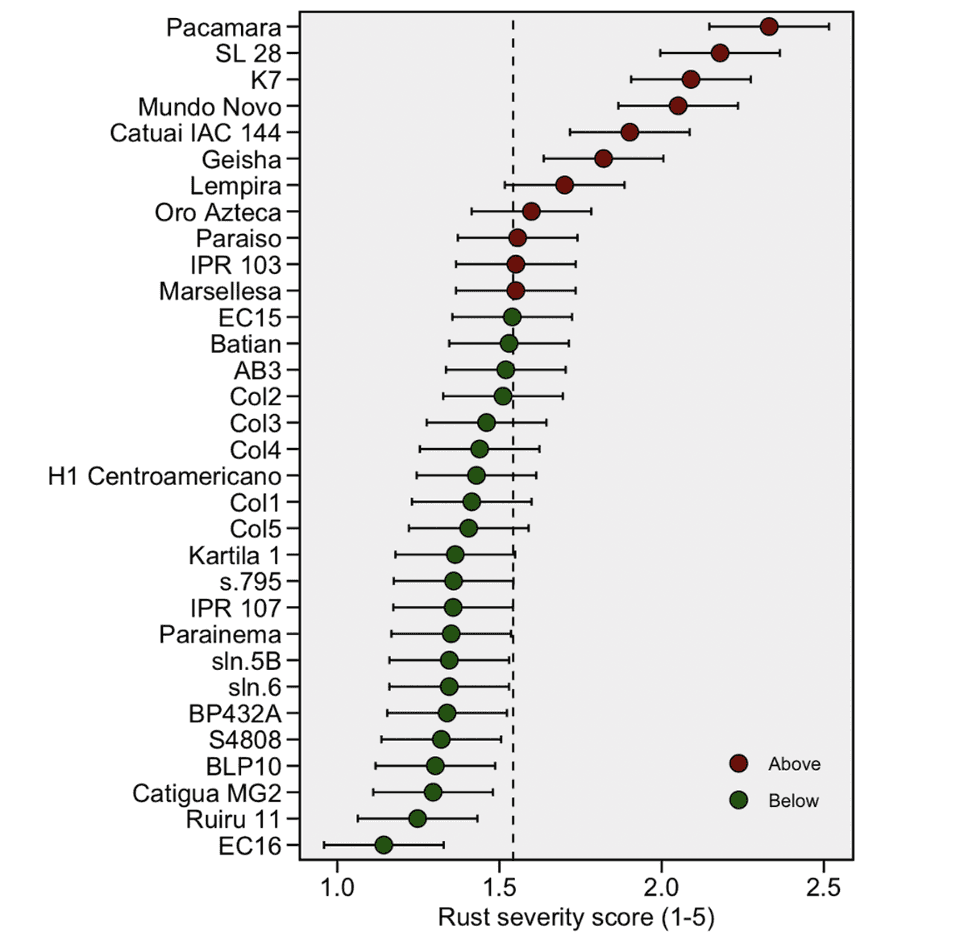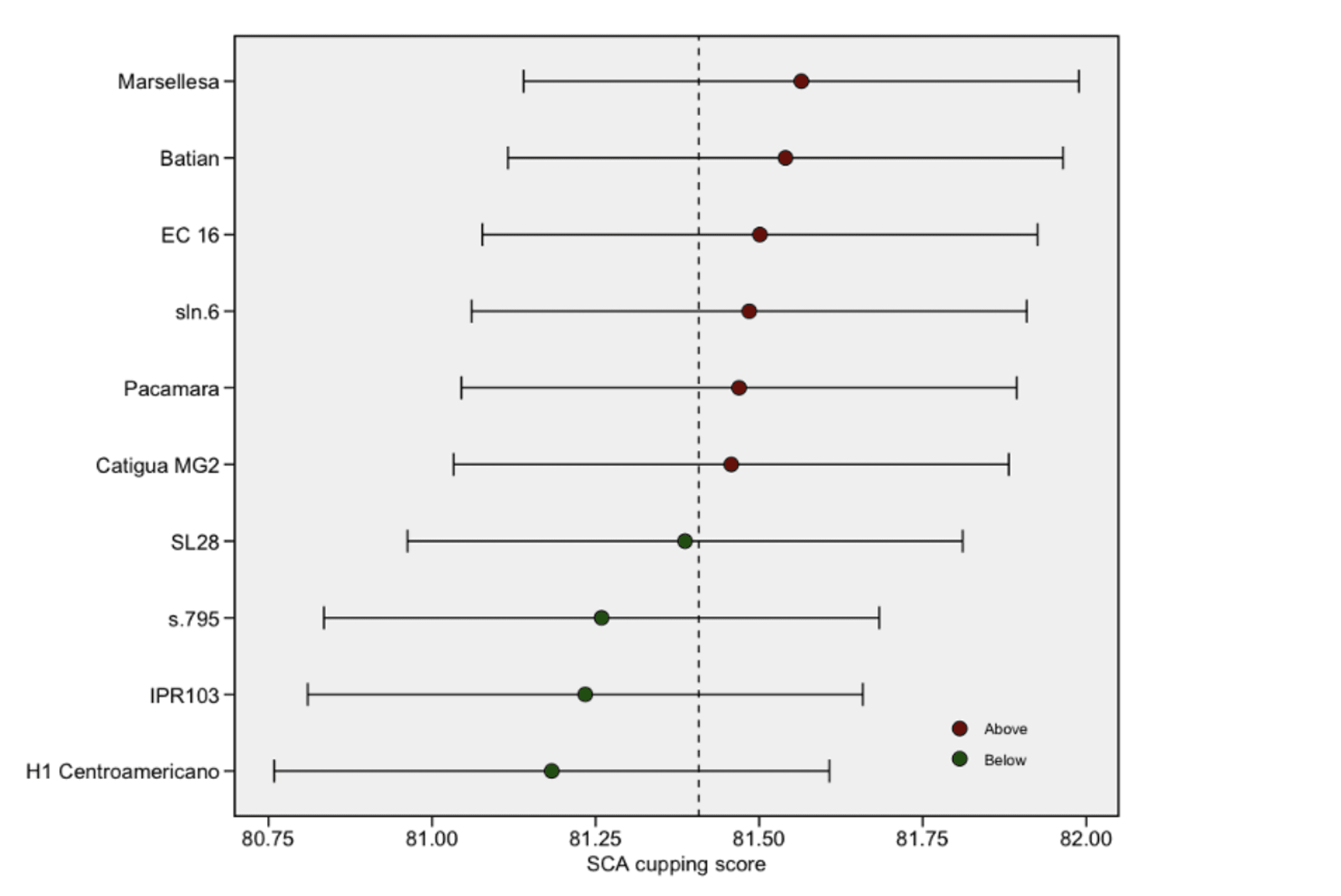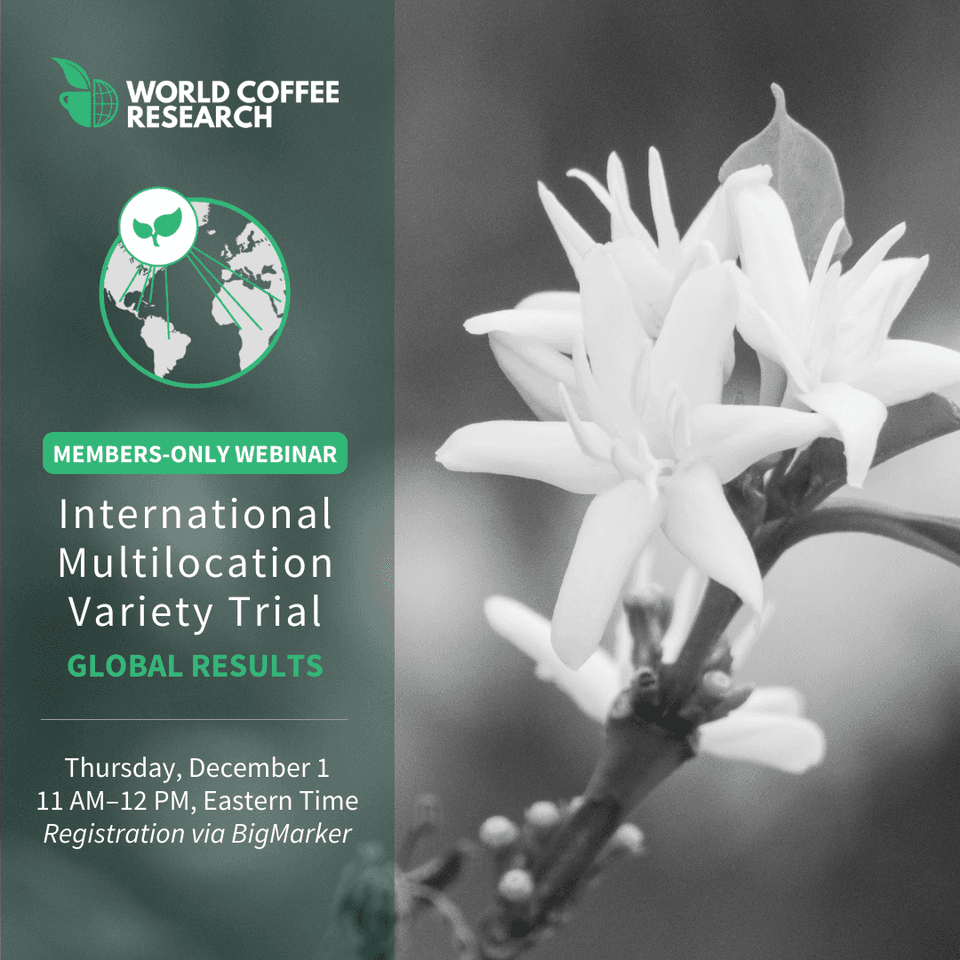IMLVT program produces initial global results
Worldwide data collection is ongoing and further analysis is to come
In 2015, World Coffee Research (WCR) launched its International Multilocation Variety Trial (IMLVT) program, which initiated the evaluation of high-performing varieties and their performance in different locations across the world. This year, the program turned seven years old—meaning a critical mass of original trial sites reached maturity—and produced its initial results on a global scale.
These results, while not yet comprehensive as data collection is still ongoing, include information on variety performance in terms of yield, disease resistance, and cup quality. Even more, they underscore the need for further multi-environment testing when determining those coffees that are most climate resilient or best suited to a specific country’s future climate.
“The IMLVT is one of WCR’s flagship projects that was a truly ambitious undertaking. A coffee variety trial of this scale across so many countries has never been done before,” said Dr. Tania Humphrey, Director of Research & Development at WCR, “Now that the trial is peaking and the data is flooding in, we are starting to see the enormous value this unique global dataset really has. We have only just begun the more in-depth analysis and I am eager to see what insights it will reveal.”
Capturing performance across variable climates
Upon the IMLVT program’s initiation, WCR gathered 31 top-performing coffee varieties (figure 1) from 11 suppliers internationally. The varieties—most of which have never been tested on such a broad basis—have since been distributed to 18 coffee-growing countries for long-term evaluation at 29 research sites.
Variety | Country | Breeder / Owner |
CATIGUA MG2 | Brazil | Embrapa |
CATUAI V IAC144 | Brazil | Embrapa |
IPR103 | Brazil | Embrapa |
IPR107 | Brazil | Embrapa |
MUNDO NOVO 379/19 | Brazil | Embrapa |
PARAISO | Brazil | Embrapa |
H1 CENTROAMERICANO | Promecafe | Promecafe / CIRAD / CATIE |
COL1 | Colombia | Cenicafe |
COL2 | Colombia | Cenicafe |
COL3 | Colombia | Cenicafe |
COL4 | Colombia | Cenicafe |
COL5 | Colombia | Cenicafe |
PACAMARA | El Salvador | PROCAFE |
LEMPIRA | Honduras | IHCAFE |
PARAINEMA | Honduras | IHCAFE |
Anacafe 14 | Guatemala | Anacafe |
S4808 | India | CCRI |
S795 | India | CCRI |
SLN5B | India | CCRI |
SLN6 | India | CCRI |
AB3 | Indonesia | ICCRI |
BLP10 | Indonesia | ICCRI |
BP432A* | Indonesia | ICCRI |
KARTILA 1 | Indonesia | ICCRI |
BATIAN | Kenya | CRI |
K7 | Kenya | CRI |
RUIRU 11 | Kenya | CRI |
SL28 | Kenya | CRI |
ORO AZTECA | Mexico | INIFAP |
GEISHA | Panama | F. Serracin |
EC15 | ECOM | ECOM |
MARSELLESA | ECOM | ECOM |
MUNDO MAYA (EC 16) | ECOM | ECOM |
Figure 1. Varieties currently being evaluated in the IMLVT program.
The locations of the IMLVT program’s sites cover a significant range of climate variability (figure 2). The global nature of the trial allows WCR to see how different varieties perform in areas that are hotter, drier, wetter, or cooler than their counterparts and can help predict how varieties will react to future conditions.
Each site follows a six-year timeline that includes activities spanning installation, the measurement of plant growth, pest/disease susceptibility, yield, and cup quality evaluation. Sites established in 2015 reached full maturity in 2022 while sites established in later years are still in process and under continuous evaluation.

Figure 2. Representation of agroecological climate zones across IMLVT sites compared to those represented in arabica production overall.
Results: yield, disease resistance, and cup quality
In the IMLVT program, variety performance is evaluated on three high priority traits—yield, disease resistance, and cup quality. In addition to measuring how plants perform in each location, the trial also measures how stable or variable these traits are across different environments. This effect is commonly referred to as the “gene-environment” or “GxE” interaction.
To date, the trial data appear to confirm that yield varies greatly from site to site, and is influenced by environmental factors, including a site’s temperature, rainfall, and pest and disease presence. While some varieties seem higher/lower yielding overall than others, they are not always the highest/lowest yielding across all locations. For example, the Mundo Maya (also called EC16, an F1 hybrid type variety) has shown to be the overall highest average yield globally to date, even though other varieties performed better at certain sites. Overall, F1 hybrids are currently showing the highest yields across all sites (figure 3).

Figure 3. Global average yield across all sites, ranked from highest to lowest yielding.
In terms of pest/disease susceptibility, WCR’s evaluations have focused on coffee leaf rust (CLR), which has plagued the coffee producing world and reduced output by a significant margin in affected areas, and coffee berry disease (CBD), a major fungal disease currently only present in Africa. The trial was designed to include testing on many sites globally as this is crucial to understanding susceptibility as some areas have higher disease pressure than others. Results to date reveal the varieties that are more susceptible to disease overall (figure 4).

Figure 4. Global average of rust severity across all varieties, ranked from highest to lowest in terms of rust presence.
In 2021, seven countries with mature sites began contributing green coffee samples for a global “GxE” cupping experiment to determine how plants with the same genetic makeup perform in the cup when the environment in which they are grown varies. In this experiment, experienced coffee cuppers from 25 international coffee companies tasted coffees from 10 varieties grown across six origins. The same varieties and sites are being tasted again in 2022 (this time with 29 companies) and in 2023.
In the 2021 cupping, some locations produced higher overall cup scores than others, and it is likely that this is influenced by environmental factors unique to particular sites, such as altitude, temperatures, and rainfall, or management factors, including processing and sample preparation. For instance, higher altitudes, lower temperatures, and lower rainfall rates were all correlated with higher cup quality. Further, some varieties perform well in the cup overall, whereas others seem especially well-suited to one site (figure 5).

Figure 5. 2021 cupping evaluation results of 10 varieties grown across the six origins included, ranked from highest to lowest.
What’s next
WCR has shared the data collected with country partners to identify the top-performing varieties for new variety introductions, and, over the coming years, will focus on the co-publication of research results to increase global knowledge of varieties. There is ongoing discussion regarding other ways of mining and sharing data, and the results from the IMLVT program will continue to inform future research. For example, the program serves as the foundation of WCR’s latest endeavor, the Innovea Global Coffee Breeding Network, in which international partners will collaborate to breed better coffee varieties for the climates of the future.
As data collection peaks, WCR is starting to plan for the future of the IMLVT program, including a gradual closure process. While there is strong demand for this unique global trial, there is a concurrent need to reduce the program’s overall footprint and focus resources to maximize the value from remaining sites.
On December 1, 2022, WCR held a member-exclusive webinar that included a report-out of the global results of the IMLVT program included in this story. You can watch the recording of this webinar by clicking the link below.
